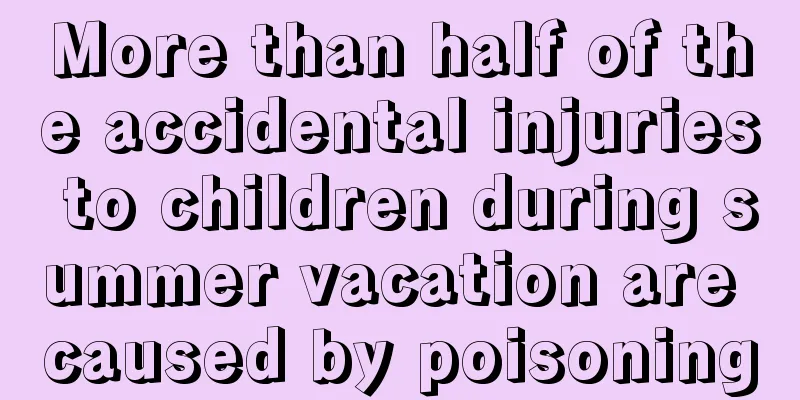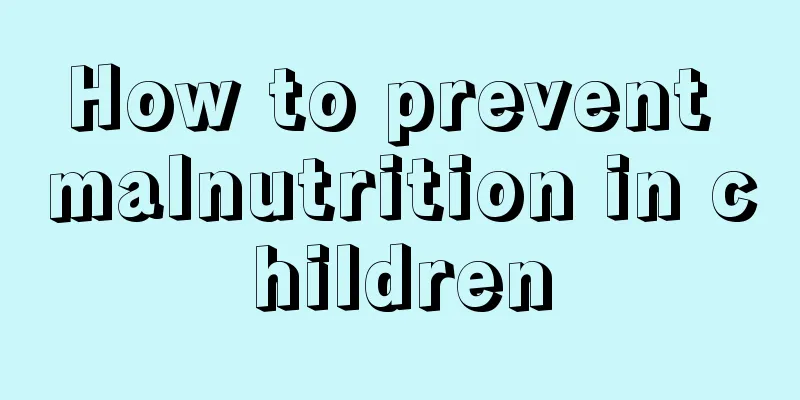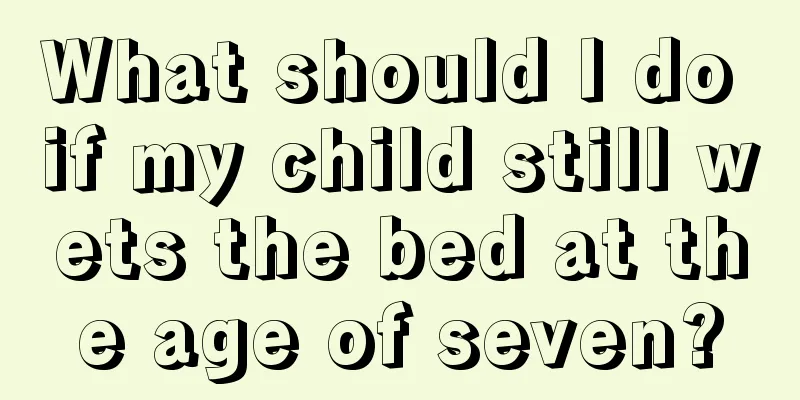More than half of the accidental injuries to children during summer vacation are caused by poisoning

|
A 9-year-old boy is in critical condition after eating poisonous mushrooms, a 3-year-old child fell from the 5th floor and died despite rescue efforts, and a boy was hit by a vehicle while playing alone... Since the summer vacation, incidents of children being accidentally injured while playing have occurred frequently. The reporter learned from the emergency department of Shanghai Children's Medical Center that from June to date, the hospital has received a total of 46 children with accidental injuries, of which the largest number was caused by accidental poisoning, reaching 27 cases, accounting for 58%; followed by injuries in car accidents, with 9 cases; 4 cases of falling, 2 cases of being hit by objects thrown from high places, 2 cases of falling out of bed, 1 case of drowning, and 1 case of foreign body in the airway. Many of these cases involved children being injured at home or while playing outside. Doctors suggest that in order to prevent children from suffering accidental injuries, parental care is the most important thing; if an accident unfortunately happens, different emergency treatment methods should be adopted for different accidental injuries. "No matter what, rush to the hospital as soon as possible. What parents can do is to try to avoid the expansion of injuries before receiving professional treatment." 1. Poisoning Case: A 9-year-old boy in Shanghai reportedly developed severe gastrointestinal symptoms after he and his family ate mushrooms picked in the wild last week. His condition is critical and he has been sent to Shanghai Children's Medical Center for emergency treatment. Doctors say that similar poisoning incidents occur every year, and summer vacation is a peak period for food poisoning among children. Reminder: Li Biru introduced that poisoning is generally divided into accidental ingestion, skin and mucous membrane absorption and airway inhalation poisoning. Among them, skin and mucous membrane absorption poisoning refers to the corrosion and burns caused by strong acids and alkalis such as sulfuric acid splashing on the skin, mucous membranes, eyes, etc.; poisoning caused by inhalation of toxic and harmful gases through the respiratory tract is inhalation poisoning, such as coal gas poisoning. She also said that urban children are more likely to be poisoned by accidentally ingesting medicines and cleaning agents, while rural children are more likely to be poisoned by accidentally ingesting pesticides, insecticides, industrial salt, etc. The reason why children are poisoned is mostly because parents do not place items correctly. Strong acids, alkalis, medicines, cleaning agents, etc. are placed where children can reach them, and are not locked. Parents even "mix up the items" by putting pesticides in Coke bottles, causing children to mistakenly think they are drinks and drink them. Prevention methods: Toxic items such as strong acids, alkalis, pesticides, etc. should be locked up at home. Inedible items should be placed out of children's reach as much as possible. Medicines should be cleaned and locked regularly. It is strictly forbidden to put inedible items in food packaging. Emergency treatment: If strong acid or alkali burns the skin, immediately rinse the wound with running water for more than 15 minutes, and then send to the hospital as soon as possible; if strong acid or alkali splashes into the eyes, also rinse the eyes with running water for more than 20 minutes, and then send to the hospital for emergency treatment. If corrosive items are ingested by mistake, first protect the stomach and intestines. You can drink large amounts of milk or egg white to form a protective film on the esophagus, stomach, etc. to reduce corrosive damage to internal organs. If poisonous items are ingested by mistake and the child is conscious, induce vomiting by stroking the deep throat with your fingers to encourage the child to spit out the toxic substances. However, do not induce vomiting if the child is not conscious, so as to prevent the vomited substances from getting stuck in the esophagus or respiratory tract and causing suffocation. At this time, the child should be sent to the hospital as soon as possible for the doctor to treat.
2. Falling from a high altitude Case: At noon on the 7th of this month, a 3-year-old boy in Pudong climbed onto the tables and chairs on the balcony while his grandmother was cooking, fell from the 5th floor, and hit the concrete floor. He died after unsuccessful medical treatment. Reminder: Li Biru told reporters that the emergency department receives many cases of children falling from high buildings every year, and most of the reasons are improper care by parents. Some parents take advantage of their children's sleep and walk away for a while to buy groceries or cook, thinking that their children are safe at home. However, when the children wake up and there is no response when they call for them, they will look for them everywhere or climb onto the windowsill out of play. In recent years, houses have paid more attention to appearance, with a large number of floor-to-ceiling windows and other designs, resulting in an increase in the number of incidents of children falling from buildings. Prevention methods: When it comes to children's safety, parents should not take any chances. It is forbidden to leave children alone at home. Windows must be protected to ensure that children are always within the adult's field of vision. Emergency treatment: If a child unfortunately falls from a building, parents should never rashly hug and shake the child in an attempt to wake him/her up. Falling from a height often causes injuries to multiple parts of the body, and shaking can aggravate the condition. Li Biru introduced that the first thing to do is to determine whether the child still has a pulse. If there is no pulse, cardiopulmonary resuscitation should be performed immediately. It is best to have two people, one of whom protects the child's spine, and the other applies chest compressions while calling 120. If the child still has a pulse, try to ensure that he does not move. If he really needs to be moved, more than two people must be involved, and the whole child must be moved. Try to move the child in a lying position, and avoid moving the child in a "you lift your head and I lift my legs" manner. She warned: "If you are alone, do not move the child and stay where you are until professionals arrive."
3. Foreign body inhalation Case: On July 1, a 3-year-old boy named Zun Zun from Yongkang, Zhejiang Province suddenly turned blue, had difficulty breathing, and became unconscious. His parents took him to the hospital for examination and found that there was a long and thin plastic part in Zun Zun's trachea, which was a part of a toy gun. It was speculated that he accidentally swallowed it while playing. After 5 hours of rescue work by the doctor, the foreign body was successfully removed. Reminder: "Not long ago, we treated a child who had a sausage stuck in his esophagus. Later, the doctor used the 'Heimlich maneuver' to remove the sausage." Li Biru introduced that foods such as peanuts, soybeans, sausages, and jelly can also choke a child's digestive tract and respiratory tract. Even coins and pen caps are items that children like to put in their mouths. Prevention methods: Parents should remind their children what they cannot put into their mouths. They should be especially careful when feeding them large hard objects. Parents should concentrate when feeding and not talk or play with their children to avoid choking. Emergency treatment: Li Biru said that for children over 1 year old, the "Heimlich maneuver" can be used, and for infants under 1 year old, the "back percussion-chest compression method" can be used. Regarding sharp objects such as fish bones stuck in the throat, she reminded parents not to swallow rice balls or drink vinegar as this may not only scratch the esophagus, but in severe cases may even puncture the aorta and cause internal bleeding. The correct thing to do is to go to the hospital for emergency treatment immediately.
4. Burns Case: On July 3, Ms. Li from Ningbo was taking care of her child at home alone. While she was boiling lard, she put her daughter in a walker. When she went to the toilet, the scalding lard poured all over her daughter, causing deep burns. Reminder: The reporter learned from the "Child Accidental Injury Research Report" released by the Beijing Youth Legal Aid and Research Center that burns from boiling water and hot oil generally occur in children aged 7 and under, and are mainly concentrated in children aged 1 to 4 years old. Specifically, they include accidentally falling into hot water, being scalded by bath water, being scalded by exploding electric heating bags, knocking over boiling water bottles, and knocking over rice cookers. Prevention method: Try to keep children away from high-temperature objects. When bathing children, parents should test the water temperature before bathing them. Emergency treatment: Li Biru said that after a burn, you should immediately apply cold compresses, rinse with cold water, and preferably ice compresses, and then go to the hospital. "Don't use folk remedies, such as applying red medicine, ointment, or prick the blisters, etc., after a burn, as this will only aggravate the infection."
5. Falling and getting hurt Case: This month, a tragedy occurred in Wuxi. The child was hit by a car while playing alone in front of the store while the parents were busy with business in the store. By the time the parents found the child, he had been lying in a pool of blood for more than half an hour. Reminder: Li Biru said that children may suffer fractures, local bleeding, or even internal organ damage when falling. Prevention method: Strengthen parental supervision and teach children correct safety knowledge in daily life. Emergency response: Similar to the emergency response for falling from a building. If a child suddenly falls to the ground, it may be due to heart problems. Do not move rashly. Call 120 immediately and wait for medical help.
[Detailed explanation of first aid techniques] 1. Heimlich maneuver (children) 1. The rescuer stands behind the child and hugs the child's torso directly from the child's armpits; 2. Make a fist with one hand and point the thumb side of the fist slightly above the navel of the child; 3. Hold your other hand outside this fist and do a series of quick inward and upward pushing movements as much as possible without touching the xiphoid process or the lower edge of the ribs; 4. To relieve the obstruction, each push should be a separate, distinct movement, and continue until the foreign body is expelled or the patient loses consciousness; 5. If the child loses consciousness and has no pulse, perform cardiopulmonary resuscitation immediately. 2. Back tapping-chest compression method (infants) 1. The baby lies face down astride the rescuer's forearm. The rescuer holds the baby's jaw tightly to support the head and keeps the neck straight (open airway). The forearm is placed on the thigh to support the baby. The baby's head should always be lower than the trunk. 2. Use the base of your palm to tap the baby's shoulder blades five times; 3. After tapping the back, place your other free arm on the baby's back and support his head with your hand. One hand supports the child's head, neck, jaw and chest; the other hand supports the child's pillow, neck and back; 4. When changing the child's position, pay attention to supporting the child's head and neck, turn the child over to a supine position, place the child on the caregiver's other arm, and place the child's forearm on the thigh. Note that the baby's head should be lower than the torso; 5. Give the child five quick downward chest compressions at the midpoint of the line between the two nipples, at the sternum; 6. Repeat steps 1-5 until the foreign body is removed or the baby is unconscious. 7. If the child loses consciousness and has no pulse, perform cardiopulmonary resuscitation immediately. |
<<: Several misunderstandings about baby supplements---ignorant love equals harm
>>: Parents' tone of voice determines their children's emotional intelligence and IQ
Recommend
What to do if your child has red eyelids
As children grow up, they will often suffer from ...
Nursing methods for infants with high muscle tension in their limbs
In fact, in daily life, many people are not caref...
What to do for children's hearing screening
Children can undergo regular physical screenings ...
One and a half year old baby always crying
It is inevitable for babies to cry as they grow u...
What's wrong with a child rolling his eyes?
Rolling eyes is very common. Many people do not p...
Which department should children go to for knee pain?
Children also experience knee pain. When a child&...
What should I do if my child doesn't go to school in the second year of junior high school?
Every parent wants their children to become succe...
What should I do if my child has malabsorption?
The digestive system is a relatively important sy...
What should children eat if their eyes are not healthy?
Eyes are considered to be the windows to the soul...
What are the reasons for the baby's lower lip to turn purple?
What causes the baby's lower lip to turn purp...
What are the screening criteria for childhood leukemia?
According to incomplete survey results, the numbe...
How to prevent dry lips in babies
Families with babies are very concerned about eve...
Does a child feel pain when he has a hernia?
Children are prone to hernia problems shortly aft...
How to treat children’s snoring?
Although snoring in adults is very common, from a...
What to do if your five-month-old baby refuses to drink a bottle
Some people say that if the first milk a baby eat...









